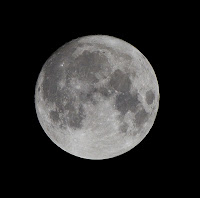Garden
 The Huntington: Expressionist Landscape Bit of Silvermine, Clivia and a Bronze Art Deco Lachaise Piece and a Passion Flower
The Huntington: Expressionist Landscape Bit of Silvermine, Clivia and a Bronze Art Deco Lachaise Piece and a Passion Flower
The Huntington was founded in 1919 by Henry E. Huntington, an exceptional businessman who built a financial empire that included railroad companies, utilities, and real estate holdings in Southern California. Huntington was also a man of vision – with a special interest in books, art, and gardens. During his lifetime, he amassed the core of one of the finest research libraries in the world, established a splendid art collection, and created an array of botanical gardens with plants from a geographic range spanning the globe. more »
 Buzz Polinator Endanged: Rusty Patched Bumble Bee Could Be Lost Due to Habitat Loss and Degradation
Buzz Polinator Endanged: Rusty Patched Bumble Bee Could Be Lost Due to Habitat Loss and Degradation
Rusty patched bumble bees once occupied grasslands and tallgrass prairies of the Upper Midwest and Northeast, but most grasslands and prairies have been lost, degraded, or fragmented by conversion to other uses. Bumble bees are keystone species in most ecosystems, necessary not only for native wildflower reproduction, but also for creating seeds and fruits that feed wildlife as diverse as songbirds and grizzly bears. more »
 Ferida Wolff's Backyard: The Supermoon, a Skunk Scare and Groundhog Haven (and Groundhog Day Movie Trivia)
Ferida Wolff's Backyard: The Supermoon, a Skunk Scare and Groundhog Haven (and Groundhog Day Movie Trivia)
Whatever interpretations we apply to the full moon, it is good to just allow its glow to wash over us, to be awed by its beautiful presence. Our November 2016 may be a special one but it doesn’t negate all the others. Let’s allow ourselves to take a moment to feel the wholeness of the universe and the oneness of humanity.I guess we all need the comfort of connection when we want it and the space to be on our own when we need it. more »
 Wild Bees, a Critical Piece of the Pollination Puzzle
Wild Bees, a Critical Piece of the Pollination Puzzle
Quinn McFrederick and co-authors collected bees and flowers at two sites in Texas and one on the UC Riverside campus. He simulated bee nests by drilling holes into wood and placing these nests in fields with wildflowers. The wild bees naturally nest in abandoned holes in trees created by beetles. McFrederick believes that the bacteria might help preserve the nectar and pollen the wild bee stores in her nest as a food source for her soon-to-be born larvae. more »






